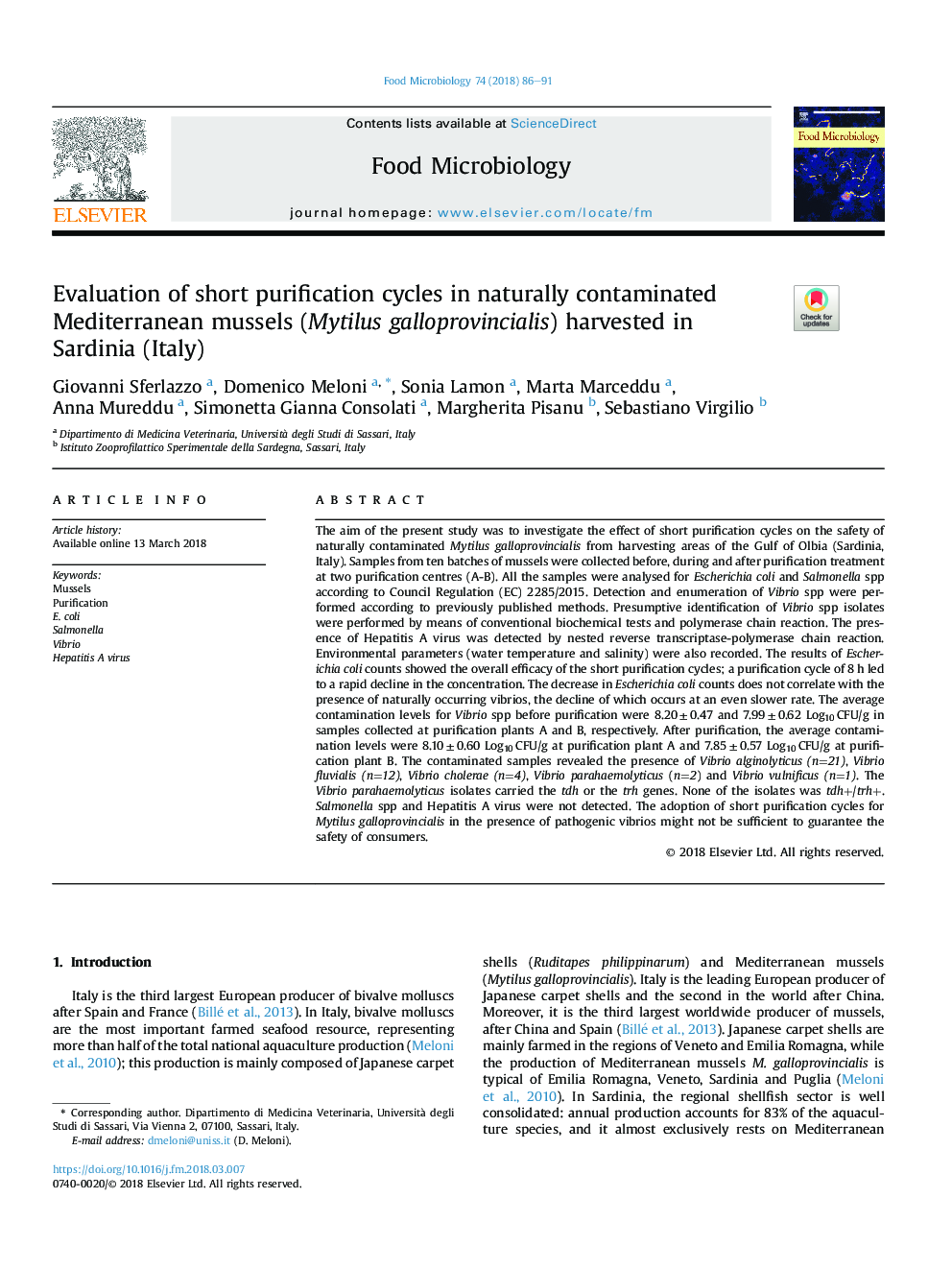| Article ID | Journal | Published Year | Pages | File Type |
|---|---|---|---|---|
| 8843502 | Food Microbiology | 2018 | 6 Pages |
Abstract
The aim of the present study was to investigate the effect of short purification cycles on the safety of naturally contaminated Mytilus galloprovincialis from harvesting areas of the Gulf of Olbia (Sardinia, Italy). Samples from ten batches of mussels were collected before, during and after purification treatment at two purification centres (A-B). All the samples were analysed for Escherichia coli and Salmonella spp according to Council Regulation (EC) 2285/2015. Detection and enumeration of Vibrio spp were performed according to previously published methods. Presumptive identification of Vibrio spp isolates were performed by means of conventional biochemical tests and polymerase chain reaction. The presence of Hepatitis A virus was detected by nested reverse transcriptase-polymerase chain reaction. Environmental parameters (water temperature and salinity) were also recorded. The results of Escherichia coli counts showed the overall efficacy of the short purification cycles; a purification cycle of 8â¯h led to a rapid decline in the concentration. The decrease in Escherichia coli counts does not correlate with the presence of naturally occurring vibrios, the decline of which occurs at an even slower rate. The average contamination levels for Vibrio spp before purification were 8.20â¯Â±â¯0.47 and 7.99â¯Â±â¯0.62 Log10â¯CFU/g in samples collected at purification plants A and B, respectively. After purification, the average contamination levels were 8.10â¯Â±â¯0.60 Log10â¯CFU/g at purification plant A and 7.85â¯Â±â¯0.57 Log10â¯CFU/g at purification plant B. The contaminated samples revealed the presence of Vibrio alginolyticus (n=21), Vibrio fluvialis (n=12), Vibrio cholerae (n=4), Vibrio parahaemolyticus (n=2) and Vibrio vulnificus (n=1). The Vibrio parahaemolyticus isolates carried the tdh or the trh genes. None of the isolates was tdh+/trh+. Salmonella spp and Hepatitis A virus were not detected. The adoption of short purification cycles for Mytilus galloprovincialis in the presence of pathogenic vibrios might not be sufficient to guarantee the safety of consumers.
Related Topics
Life Sciences
Agricultural and Biological Sciences
Food Science
Authors
Giovanni Sferlazzo, Domenico Meloni, Sonia Lamon, Marta Marceddu, Anna Mureddu, Simonetta Gianna Consolati, Margherita Pisanu, Sebastiano Virgilio,
